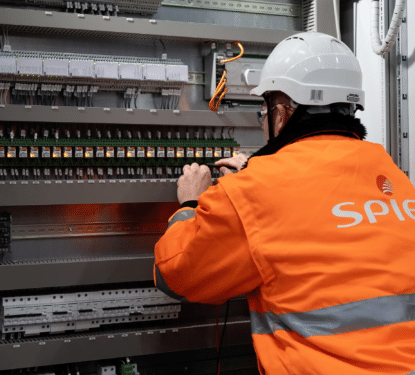The Physical Security Industry has undergone significant structural changes in the last 3 years and this accelerated in 2012 driven by the need to combat the worst trading conditions for decades.

The structure of the business has morphed not just to compensate or accommodate but also to meet and beat the challenge and deliver growth. Our report “The Physical Security Business in 2012” - ‚Â http://memoori.com/physical-security-2012 ‚Â forecasts growth of 4% across the globe in product sales in 2013 ‚Â but that will depend on much higher levels of growth in Asia and particularly China.
In this article we take a look at both the demand and supply side of the physical security industry and how it is shaping up in China and why we are about to see much more two way trading between the West and China.
The structure of the business has morphed not just to compensate or accommodate but also to meet and beat the challenge and deliver growth. Our report “The Physical Security Business in 2012” - ‚Â http://memoori.com/physical-security-2012 ‚Â forecasts growth of 4% across the globe in product sales in 2013 ‚Â but that will depend on much higher levels of growth in Asia and particularly China.
In this article we take a look at both the demand and supply side of the physical security industry and how it is shaping up in China and why we are about to see much more two way trading between the West and China.
China - The Fastest Growing and soon to be the Largest Market in the WorldDespite a fall in GDP growth in the last few years demand for physical security in China has forged ahead delivering a CAGR of some 25 to 30% over the last 5 years, the highest growth recorded in our industry and there is no indication that growth will fall off in the near future.
One of the reasons for this is that the penetration of security systems in China is still remarkably low. The GDP per capita in 2012 is projected at $6,120, and sales per capita was $2.4 per capita showing that the potential for future growth is enormous and would have to grow ‚Â 6 times to equal the current penetration level in North America. So why is it that US and European manufacturers are not making a better job of exploiting the Chinese market? Conversely why is it that Chinese manufacturers are having difficulty in establishing a solid presence in the developed markets of the world with the exception of delivering through OEM (Own Equipment Manufacturers) channels.
China is developing a strong indigenous manufacturing supply industry and in particular two companies Hikvision and Dahua are growing fast increasing their share of the local market. They have also been taking product business away from Taiwanese and Korean manufacturers in western markets.
Hikvision sales in 2012 were somewhere around $1.2 billion, a growth of 40% over 2011 and of this export product sales of DVR/ camera equipment was around 35%. The majority of growth has come from domestic acquisitions, of access control, guarding services and specialist vertical market systems integration companies. They are developing a similar model to Honeywell and Schneider of developing a systems and product business ‚Â separately.
Hikvision’s latest ‚Â Q1~Q3 report showed total assets around US$2b. At per share value of about RMB$32 (http://stockhq.ccstock.cn/pages/stockhome/002415.html) and about 2 billion shares available (2,008,611,611 at the end of Sept 2012) giving it a valuation of US$10 billion. We don't have any recent info on the cash flow, but judging from the 2011 report and the growth rate of 40%, it could be around US$1.2 billion. So Hikvision (ranked by IMS Research as the world’s largest supplier of DVR and video surveillance equipment) could also soon become one of the world’s largest suppliers of security systems.
Technology and Getting the Marketing Message Across is ImperativeThere is little point in comparing Hikvision ‘s success with that of Axis Communications the No1 supplier of IP surveillance networking cameras, because their business models are quite different, but it does beg the question of why Axis with its technological leadership has not yet made a bigger impact on the world’s fastest growing ‚Â market. One of the reasons could be that analogue systems are still flavor of the month in China and as such it is difficult to make the breakthrough with IP systems because the distribution channels are still immature. Local manufactures rather late in the race are now moving ahead with this technology but are way behind the western early adopters. Does this now leave the door wide open for Axis communications and other specialist manufacturers of IP products?
Some 15 years ago fire detection systems in China moved almost overnight to analogue addressable systems that cost double the price and no local manufactures could supply them. Imported products flooded in and the local system installers quickly learn how to install them. Although moving from analogue to IP requires more skill, it will happen, and in China it will come quickly. Price is no longer king in western markets but cost of ownership made up of many factors is; and this will also apply in China as IP takes hold and offers many different and improved solutions.
So our take on the Pelco / Hikvision rumor is that it is nothing to do with M&A at this time but using Pelco’s IP technology for the Chinese market pushed through Hikvision channels of distribution and Hikvision products into the US market through Pelco’s channels of distribution.
Neither has established themselves in each other’s backyard, despite a lot of time, money and energy being spent and here is an opportunity for them to do it in a joint market that our report predicts will account for 60% of the world’s market by 2017. If the alliance works they can then join together to become the No 1 Video Surveillance manufacturer / system supplier in the world if it suits both parties.
Whilst China is about to become ‚Â the largest market in the world and although it is dominated by indigenous manufacturers it does not have one company that strides the international stage comfortably with products at the leading edge. Hikvision come closest and its alliance with Schneider which was announced in July 2012 is one part of its strategy to change this. We think others will follow.



